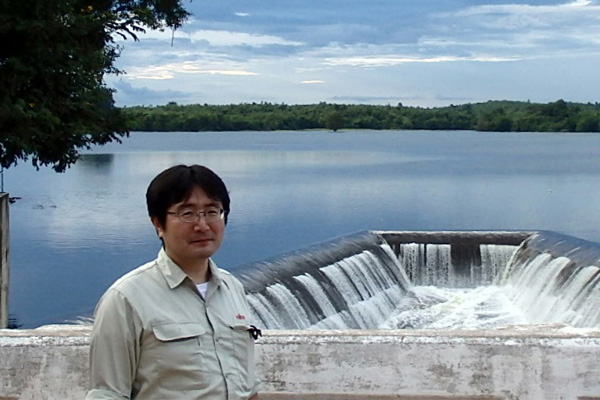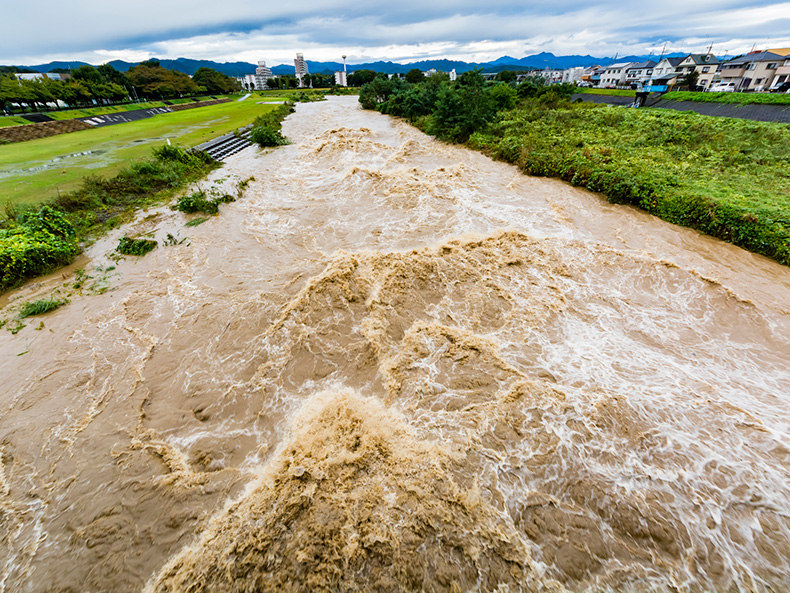- Contents
Recent Disaster (Flooding) Circumstances
Due to the abnormal climate nowadays, more damage is being caused by long frontal rainfall, linear rainbands, typhoons, and sudden rain. Rivers flood in an exceedingly short amount of time, and the previous measures used against floods are no longer enough for prevention.
Moreover, through existing disaster measures, water gauges have been installed on rivers that will dispatch the flood fighting department and fire department if the water reaches a certain level and issue an evacuation order to citizens if the water reaches a different level. However, despite the evacuation guidance based upon monitoring the water level, very few small and medium rivers had been equipped to predict where the water level will be or how close the water has come to the banks after a few hours.
Because of this, a Fujitsu development team has been established to prevent casualties due to flooding. The team talked about the creation of the “AI Water Management Prediction System” to help resolve this social issue and give everyone peace of mind.
How Does Fujitsu Hope to Prevent Flooding Casualties?

Koichi Abe [Social System Group, Disaster Prevention System Division] (Below: Abe): Until now, river water levels have been predicted using academic rainwater outflow models based on river cross section surveys and inspections of geological features carried out by civil engineering companies. These prediction models are suited for routine national surveys and management of large rivers, but not for small or medium rivers where funds cannot be allocated for national surveys and inspections. We began developing the AI Water Management Prediction System to make it possible to predict water levels for small and medium rivers. The forces driving the project are the online tracking records from the river management system and the fact that Fujitsu Laboratories, which gains insight from AI prediction, formed a team to resolve this social issue.
How Can the AI Water Management Prediction System Benefit Us?
Abe: As mentioned, with the introduction of the AI Water Management Prediction System to local governments, water level prediction for small and medium rivers will be possible. Creating a water level prediction model using AI from past observational data and being able to predict the corresponding river water level from the expected rainfall upstream will allow local governments to gain a head start for evacuations to prevent casualties due to flooding. More precise evacuation orders and more appropriate deployment of personnel and shelter preparation will be of great assistance. Although it is not a system that will directly touch all consumers, the AI Water Management Prediction System indirectly contributes to the safety and security of people.
What is the Vision for the AI Water Management Prediction System?

Abe: Since the AI Water Management Prediction System has just been released, true operation will be from now onward, but local governments have already expressed positive sentiments such as "We're glad we were able to predict flooding from sudden rain," and other hopes. Even after introductions to the system become regular, we intend to work closely with local governments to make the system even more precise. Through providing flood control measures, regardless of where you live, we wish to contribute to the realization of a safe and secure life.
Even if the consumer never sees it, Fujitsu is taking one step at a time toward a world that is easier to live in. We will keep on moving forward.




